If your child is experiencing rough nights, waking frequently and being disturbed, you might wonder if there’s anything that can help them. Many parents turn to decorating a child's bedroom in calming colours, creating a good sleep environment that’s peaceful and will aid rest.
Here’s how to choose calming colours and create a sleep-inducing space for your child, so that you all get a better night’s sleep.
Does your child’s bedroom environment really affect their sleep?
We all love to sleep. You may know what it’s like to struggle to have a good night’s sleep; from having a small baby who wakes frequently, to nights when you’re either too hot or too cold, you know how miserable insomnia can be.
It’s the same for our kids. External influences can prevent your child from sleeping well: too much noise, a room that’s not the right temperature, or an environment that’s messy. That’s why creating the right environment to aid sleep is really important. The question is, how?
Maintaining the right temperature can help sleep
Did you know that a child’s bedroom should be between 15 and 19 degrees for the perfect night’s sleep?
A cooler room temperature is one of the most important factors in getting a good night’s sleep.
Our bodies have a dip in temperature during the evening in preparation for sleep. So if you turn the thermostat down, it can actually help you nod off.
Soft lights and blackout blinds can help your child sleep
Interior Designer Cherish Mapiro advises:
“We all sleep better when it’s dark, so invest in a good black-out blind or heavy curtains - especially in summer when the sun rises long before you want the kids to be awake - and keep the door closed so they aren’t disturbed by the lights you have on in the house.”
“You should also turn off or remove electrical devices that have stand-by lights, as these can be distracting.”
Bedroom lighting should be gentle, with orange or reddish toned bulbs that can be used for the last story before bed.
Colour can transform the bedroom environment
“We all associate colours with emotions – blue is cool and calm, green is relaxing and orange is invigorating,” says Cherish.
“Well, you can use this logic when decorating your little one’s bedroom, to make sure they associate their room with calmness, peacefulness and sleep.”
Colours that work well in bedrooms include green, blue, pink, lilac, yellow, beige and stone.
Green
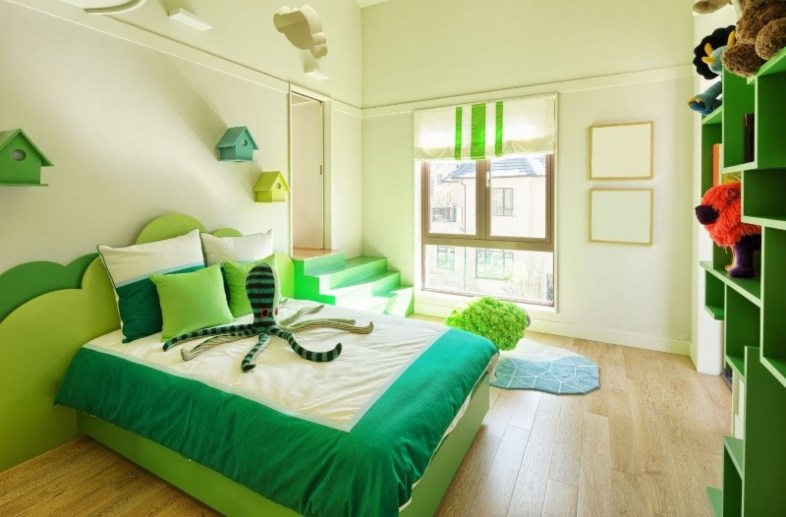
Green reminds us of parks and trees and is the colour of health and serenity. It can help your child with concentration and reading ability and they wake up refreshed.
Blue
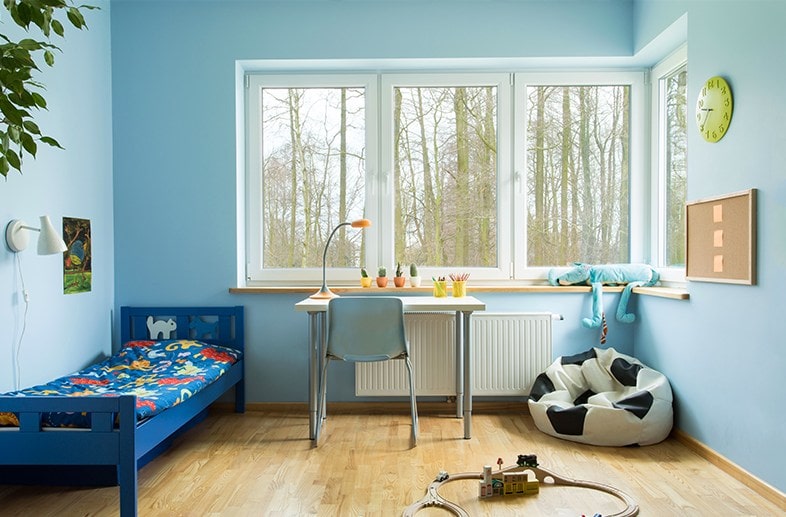
Blue reminds us of the sea and sky, which can lower heart rate and blood pressure. “Scientists have discovered that it can reset our circadian rhythm. Circadian rhythms are 24-hour cycles that are part of the body’s internal clock, running in the background to carry out essential functions and processes. One of the most important and well-known circadian rhythms is the sleep-wake cycle,” says Cherish, “so adding blue to your child’s room may help if they have had a period of bad nights. It staves off feelings of anxiety and anger. It’s great if your child has any behavioural problems, especially around bedtime.”
Pink
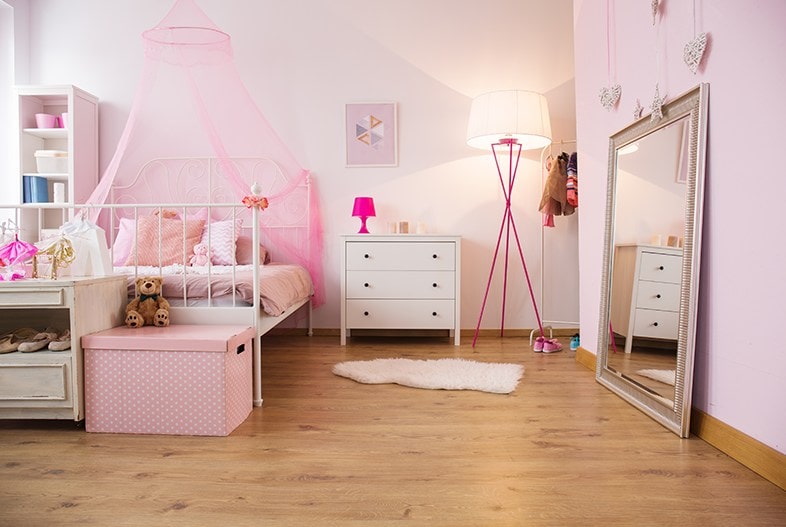
Though red can be an angry colour, its pale counterpart is calming and aids sleep. “However, don’t paint the whole room pink,” says Cherish, “as kids tend to grow out of it and it can then just become annoying to them!”
Yellow
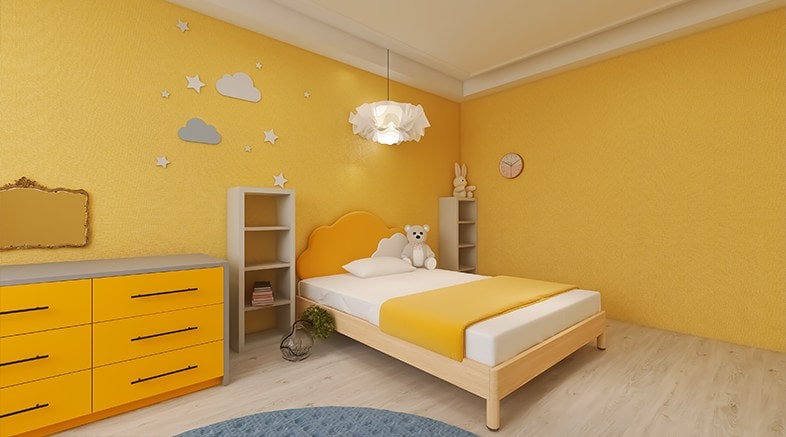
A pale lemon can help with motivation and happiness, as it’s a very positive colour.
Lilac
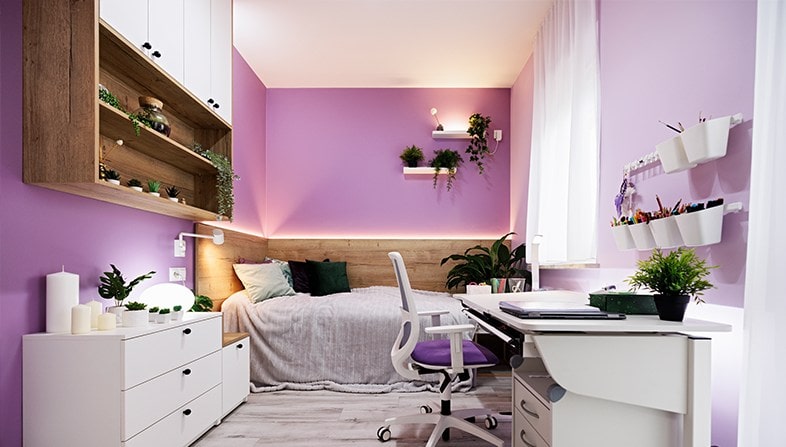
Lilac can also make you happier, more spiritual and calmer. Like pink, it can aid relaxation.
Beige and stone
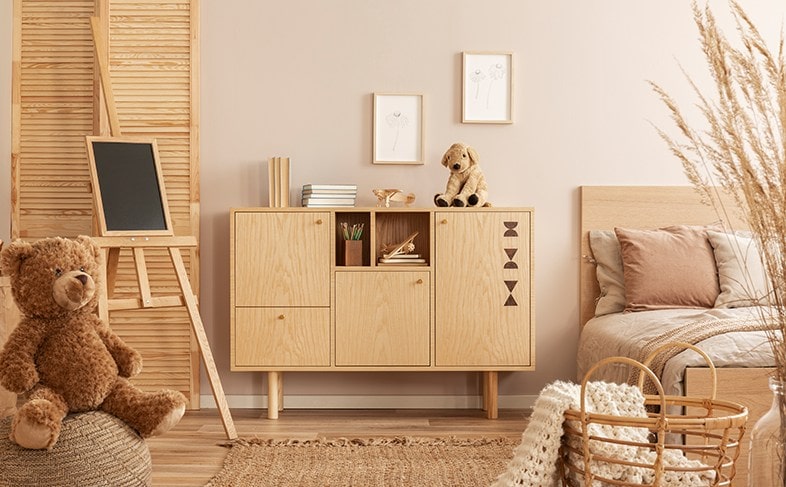
The colours of wood, marble and natural stone can bring a peaceful calm to your home. “But don’t overdo it,” advises Cherish. “It can look bland and lower your energy.”
Colours to avoid in bedrooms

Unsurprisingly, there are a few. Red, which can signal danger, black which is packed with negativity, purple which can be overpowering and brown, which is depressing and dark.
Using sound in your child’s bedroom
You may think that your child’s bedroom needs to be silent, but you’d be wrong.
Most babies have listened to so much noise in the womb (heartbeats, digestive noises, breathing, voices) that the last thing they are used to is no noise at all!
Music and white noise can make a big difference to your baby’s sleep, as they find it comforting.
Invest in a white noise machine, or a sleep aid that has all sorts of sounds including lullabies, white and pink noise, heartbeats and womb sounds. There are lots out there!
“Music and baby-friendly sounds can also help your child get to sleep if there are external sounds such as traffic, the TV and so on,” explains Cherish.
“Of course, when your child is a baby you want them to be able to distinguish between day and night eventually, so it’s a good idea to allow light and sound during the day, even at nap times but to create a dark, much quieter environment at night.”
“If you live near a busy road or the room is large and echoing, using thick curtains and soft surfaces for chairs and flooring can help dampen noises down.”
Let your child choose their bedding
“When your child is old enough to choose their own clothes, toys and food, it’s also time to allow them some choice in their own bedding and bedroom furnishings,” suggests Cherish.
“They can go shopping with you for duvet covers, curtains, rugs and blankets and you can create the look together, taking their likes and dislikes into account.”
“Remember the tips above, though, about what colours are restful and how to create a peaceful room and allow them to add things they love to make it their own.”
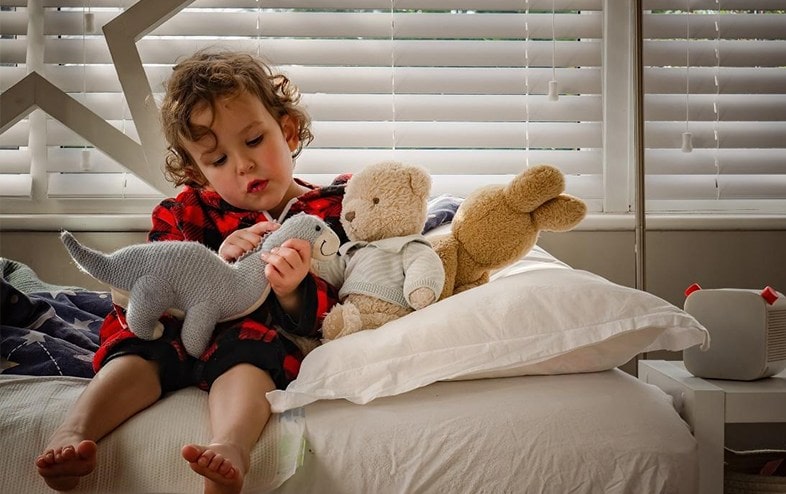
At this stage, you can also help encourage your child to wear DryNites® Pyjama Pants and add Bed Mats to their drawers so they can start to independently manage their night times. This can help them feel more confident that they can have a good night’s sleep and avoid waking family members if they have an accident, which can be hugely disruptive.
A tidy bedroom makes for a more relaxing environment
“We all feel better in a tidy environment,” says Cherish. “Encourage your child to clear up after play sessions before it’s time for bed as soon as they are old enough – it’s never too soon to start.”
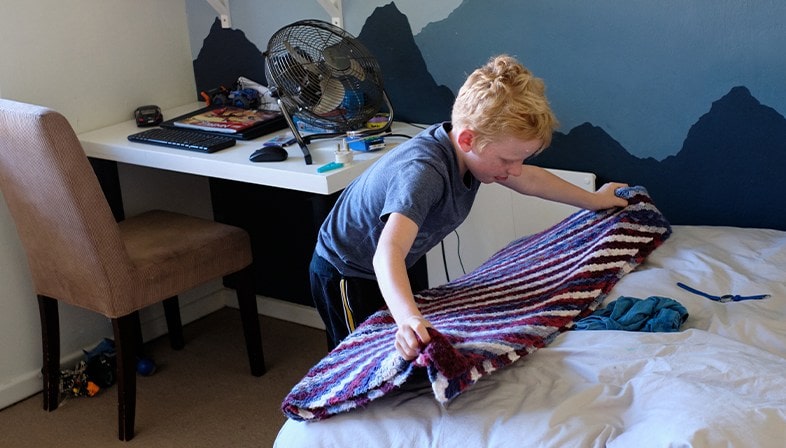
“Make sure they have plenty of storage areas, cupboards and bags where they can hide away their bits and pieces and then just choose a few best-loved toys for bedtime. Their room will feel calm and uncluttered—the best preparation for sleep.”
A relaxing bedroom and a consistent bedtime routine
“Once you have cracked getting your child to help you tidy,” says Cherish, “Build this into your bedtime routine so that they have consistency and know what’s expected each night.”
After play time, have tidy up time, then swing straight into your bedtime routine – bath, story, bed.
“Not only does this mean that your child will settle into a routine that’s calming and familiar, but it will help when they move to nursery or school and tidying up after themselves is expected of them.”
Help your child enjoy a restful night’s sleep
Sometimes, even the calmest bedroom environments can’t prevent your child from having the occasional night-time accident.
If your child is having wet nights, help them sleep better, stay dry and wake up feeling refreshed the next morning with Huggies® DryNites® Bed Mats and Pyjama Pants. These helpful products are designed to help manage their bedwetting as they develop.




 your parenting partner
your parenting partner